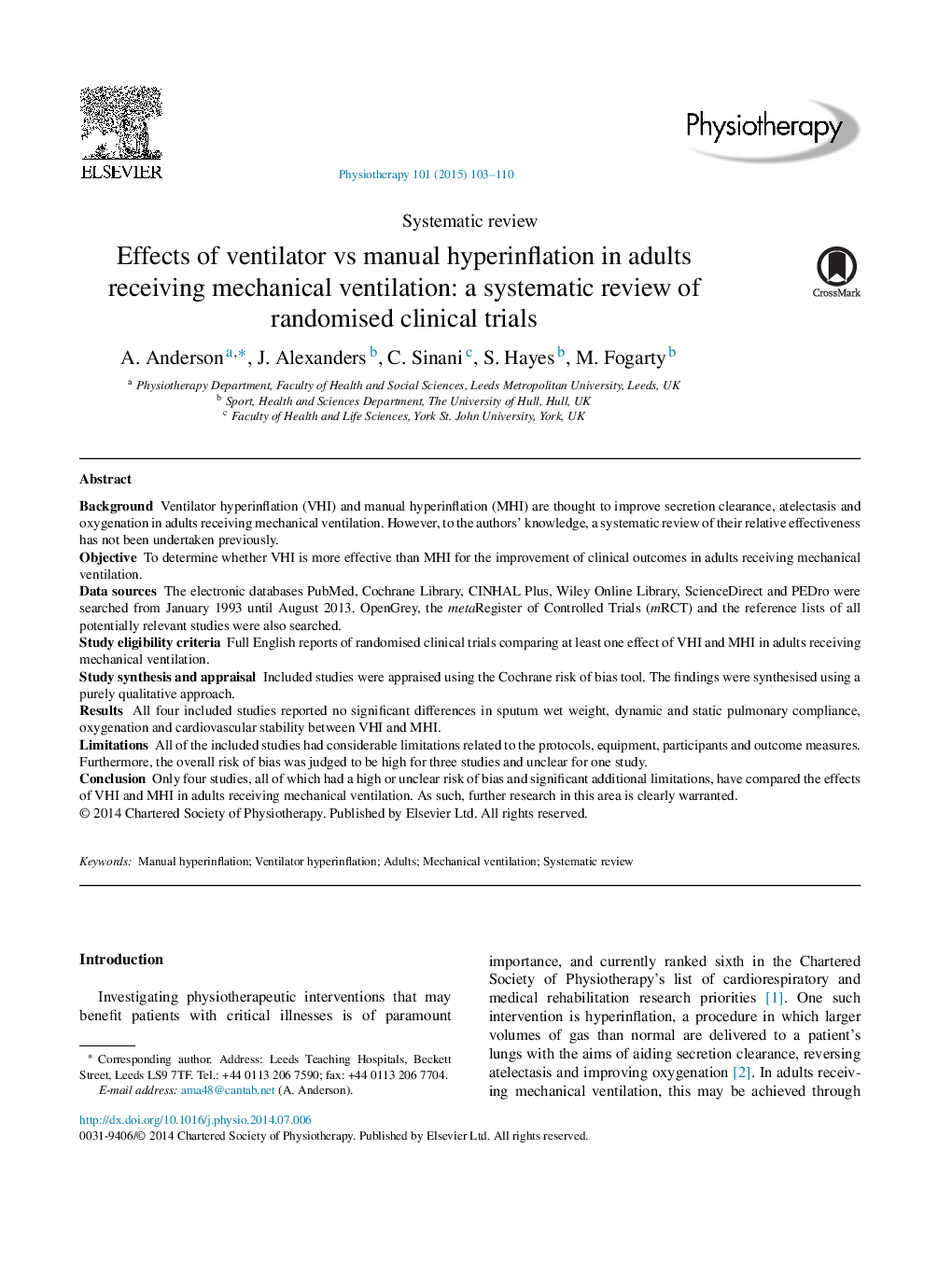| Article ID | Journal | Published Year | Pages | File Type |
|---|---|---|---|---|
| 5865102 | Physiotherapy | 2015 | 8 Pages |
BackgroundVentilator hyperinflation (VHI) and manual hyperinflation (MHI) are thought to improve secretion clearance, atelectasis and oxygenation in adults receiving mechanical ventilation. However, to the authors' knowledge, a systematic review of their relative effectiveness has not been undertaken previously.ObjectiveTo determine whether VHI is more effective than MHI for the improvement of clinical outcomes in adults receiving mechanical ventilation.Data sourcesThe electronic databases PubMed, Cochrane Library, CINHAL Plus, Wiley Online Library, ScienceDirect and PEDro were searched from January 1993 until August 2013. OpenGrey, the metaRegister of Controlled Trials (mRCT) and the reference lists of all potentially relevant studies were also searched.Study eligibility criteriaFull English reports of randomised clinical trials comparing at least one effect of VHI and MHI in adults receiving mechanical ventilation.Study synthesis and appraisalIncluded studies were appraised using the Cochrane risk of bias tool. The findings were synthesised using a purely qualitative approach.ResultsAll four included studies reported no significant differences in sputum wet weight, dynamic and static pulmonary compliance, oxygenation and cardiovascular stability between VHI and MHI.LimitationsAll of the included studies had considerable limitations related to the protocols, equipment, participants and outcome measures. Furthermore, the overall risk of bias was judged to be high for three studies and unclear for one study.ConclusionOnly four studies, all of which had a high or unclear risk of bias and significant additional limitations, have compared the effects of VHI and MHI in adults receiving mechanical ventilation. As such, further research in this area is clearly warranted.
